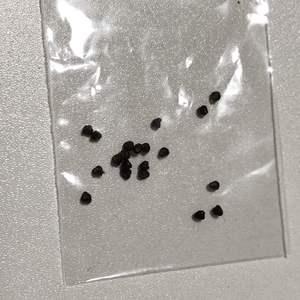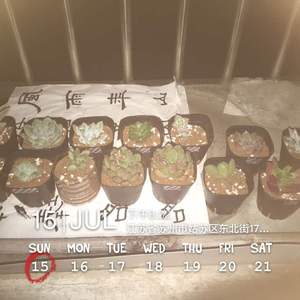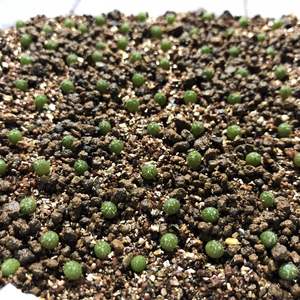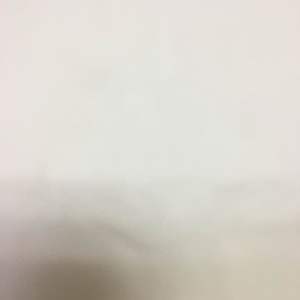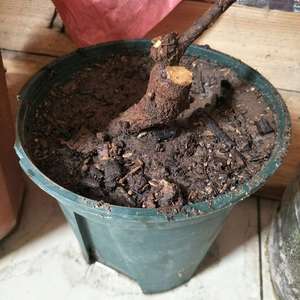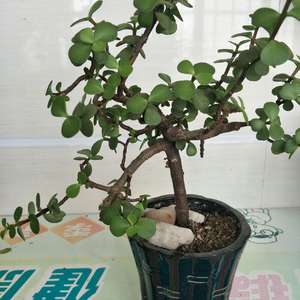成长记
涟漪潋滟
2018年07月12日

7月9日播下番茄黄瓜和中药种子,今天金太阳番茄已经发芽,播3出3,黑樱桃出1,黄瓜出1。7月12日播下各种香草种子,由于没有用东西遮盖,可能被老鼠造访了,有些种子是不需覆土的,可能已经被搞乱或不见。12日全植物施了一种叫超敏蛋白的水溶肥。本来是用酵素肥的,但酵素可能缺少微量元素,所以找了这个肥互补。


0
0
文章
Miss Chen
2018年07月03日

Description: This plant is a summer annual about 2-7' tall that branches occasionally. The stems are terete (circular in cross-section), and pubescent. The alternate leaves are up to 8" long and across (excluding the petioles). They are cordate or orbicular-cordate, slightly dentate along their margins, and more or less pubescent. The primary veins of the leaves are arranged palmately. The petioles are up to 4" long and pubescent as well. The foliage of the entire plant is mostly light green, although the upper surfaces of the leaves are dull green.
From the axils of the upper leaves, there occasionally develops a single flower about ¾" across. It consists of 5 petals that are orange-yellow or yellow, 5 sepals that are pubescent and light green, and numerous stamens with golden yellow anthers that surround the pistil in a loose cluster. The flowering stalk of each flower is about 1" long, which is much shorter than the petioles of the leaves. The blooming period usually occurs from late summer to early fall, and lasts about 1-2 months. The flowers are sparingly produced and short-lived. Each flower is replaced by a fruit about ¾" across. It is initially light green, but rather quickly turns brown or black with maturity. This fruit consists of a ring of about 10-15 flattened seedpods. Each seedpod has a stout beak and contains about 5-15 seeds. Each seed is greyish brown, somewhat flattened, and either reniform (kidney-shaped) or cordate (heart-shaped). The root system consists of a stout white taproot. This plant spreads by reseeding itself.
Cultivation: Velvetleaf is typically found in full sun, mesic conditions, and a fertile soil consisting of loam or clay-loam. The fertility of the soil, particularly the level of nitrogen, has a strong influence on the size of the plant. The seeds can remain viable in the soil for at least 20 years, if not considerably longer.

Range & Habitat: This is a common non-native plant that occurs in most counties of Illinois (see Distribution Map). Habitats include cropland (particularly corn and soybean fields), abandoned fields, vacant lots, construction sites, and waste areas. Velvetleaf typically occurs where the soil has been recently disturbed and the long dormant seeds are brought close to the soil surface. The seeds germinate during warm weather after the spring tilling of fields, and the new generation of plants develops and matures very quickly during the heat of summer, prior to the fall harvest. As a result, Velvetleaf is a major weed of cropland in Illinois. It was introduced into the United States from India as a possible source of bast.
Faunal Associations: The nectar and pollen of the flowers attract various kinds of bees, including bumblebees, long-horned bees (Melissodes spp.), leaf-cutting bees (Megachile spp.), and Halictid bees. Occasionally, small- to medium-sized butterflies visit the flowers for nectar, while Syrphid flies feed on the pollen (Robertson, 1929). Some insects feed destructively on Velvet Leaf. Insects that feed on either the mature or developing seeds include Amara aenea (Common Sun Beetle), Anisodactylus sanctaecrucis (a ground beetle), Harpalus pensylvanicus (Pennsylvania Ground Beetle), Gryllus pennsylvanicus (Fall Field Cricket), larvae of Althaeus folkertsi (Velvetleaf Seed Beetle), Liorhyssus hyalinus (Hyaline Grass Bug), Niesthrea louisianica (Louisiana Hibiscus Bug), larvae of Helicoverpa zea (Corn Earworm Moth), and larvae of Heliothis virescens (Tobacco Budworm Moth); see White et al. (2007), Lundgren & Rosentrater (2007), and Gibb (1991). Some of these insects also feed on the flowers and their buds. The larvae of Calycomyza malvae (a leaf-miner fly) tunnel through the leaves, while Ophiomyia abutilivora (a leaf-miner fly) bore through the stems of Velvet Leaf (Spencer & Steyskal, 1986). The larvae of Pyrgus communis (Checkered Skipper) make folded-leaf nests, from which they feed (Barnes, 1999).

Photographic Location: A vacant lot in Urbana, Illinois. There is a small black bee visiting the flower in one of the photographs.
Comments: Velvetleaf is a rather tall and lanky plant with large leaves that is easy to identify in the field because there is really nothing else that resembles it. There are other weedy members of the Mallow family that have been introduced from abroad, but they are much smaller plants. Velvetleaf is about as tall as the native Hibiscus spp. (Rose Mallows), but the latter are perennials with darker foliage and much larger flowers. The seeds of Velvetleaf are reportedly edible. In an outdoor emergency, the soft leaves can be used as a substitute for toilet paper.
From the axils of the upper leaves, there occasionally develops a single flower about ¾" across. It consists of 5 petals that are orange-yellow or yellow, 5 sepals that are pubescent and light green, and numerous stamens with golden yellow anthers that surround the pistil in a loose cluster. The flowering stalk of each flower is about 1" long, which is much shorter than the petioles of the leaves. The blooming period usually occurs from late summer to early fall, and lasts about 1-2 months. The flowers are sparingly produced and short-lived. Each flower is replaced by a fruit about ¾" across. It is initially light green, but rather quickly turns brown or black with maturity. This fruit consists of a ring of about 10-15 flattened seedpods. Each seedpod has a stout beak and contains about 5-15 seeds. Each seed is greyish brown, somewhat flattened, and either reniform (kidney-shaped) or cordate (heart-shaped). The root system consists of a stout white taproot. This plant spreads by reseeding itself.
Cultivation: Velvetleaf is typically found in full sun, mesic conditions, and a fertile soil consisting of loam or clay-loam. The fertility of the soil, particularly the level of nitrogen, has a strong influence on the size of the plant. The seeds can remain viable in the soil for at least 20 years, if not considerably longer.

Range & Habitat: This is a common non-native plant that occurs in most counties of Illinois (see Distribution Map). Habitats include cropland (particularly corn and soybean fields), abandoned fields, vacant lots, construction sites, and waste areas. Velvetleaf typically occurs where the soil has been recently disturbed and the long dormant seeds are brought close to the soil surface. The seeds germinate during warm weather after the spring tilling of fields, and the new generation of plants develops and matures very quickly during the heat of summer, prior to the fall harvest. As a result, Velvetleaf is a major weed of cropland in Illinois. It was introduced into the United States from India as a possible source of bast.
Faunal Associations: The nectar and pollen of the flowers attract various kinds of bees, including bumblebees, long-horned bees (Melissodes spp.), leaf-cutting bees (Megachile spp.), and Halictid bees. Occasionally, small- to medium-sized butterflies visit the flowers for nectar, while Syrphid flies feed on the pollen (Robertson, 1929). Some insects feed destructively on Velvet Leaf. Insects that feed on either the mature or developing seeds include Amara aenea (Common Sun Beetle), Anisodactylus sanctaecrucis (a ground beetle), Harpalus pensylvanicus (Pennsylvania Ground Beetle), Gryllus pennsylvanicus (Fall Field Cricket), larvae of Althaeus folkertsi (Velvetleaf Seed Beetle), Liorhyssus hyalinus (Hyaline Grass Bug), Niesthrea louisianica (Louisiana Hibiscus Bug), larvae of Helicoverpa zea (Corn Earworm Moth), and larvae of Heliothis virescens (Tobacco Budworm Moth); see White et al. (2007), Lundgren & Rosentrater (2007), and Gibb (1991). Some of these insects also feed on the flowers and their buds. The larvae of Calycomyza malvae (a leaf-miner fly) tunnel through the leaves, while Ophiomyia abutilivora (a leaf-miner fly) bore through the stems of Velvet Leaf (Spencer & Steyskal, 1986). The larvae of Pyrgus communis (Checkered Skipper) make folded-leaf nests, from which they feed (Barnes, 1999).

Photographic Location: A vacant lot in Urbana, Illinois. There is a small black bee visiting the flower in one of the photographs.
Comments: Velvetleaf is a rather tall and lanky plant with large leaves that is easy to identify in the field because there is really nothing else that resembles it. There are other weedy members of the Mallow family that have been introduced from abroad, but they are much smaller plants. Velvetleaf is about as tall as the native Hibiscus spp. (Rose Mallows), but the latter are perennials with darker foliage and much larger flowers. The seeds of Velvetleaf are reportedly edible. In an outdoor emergency, the soft leaves can be used as a substitute for toilet paper.
0
0
文章
Miss Chen
2018年06月28日


6.Graptoveria 'Topsy Debbie'
Graptopetalums like 'Topsy Debbie' form rosettes of leaves that spread by offsets, which easily form new plants for your propagating pleasure. Plants must grow in full sun for best health and vigor.

7.Aloe hawthoroides
The classic aloe plant has gotten an update: Aloe hawthoroides has dozens of feathery bristles on each leaf, which are all bark but no bite. This touchable plant has a moderate growth habit and is tolerant of a wide variety of growing conditions, as long as you don't let it freeze or sit in stagnant water.

8.Kalanchoe rhombopilosa
Who can resist a plant called "pies from heaven?" This kalanchoe is but one of the many strange and beautiful living things that hails from Madagascar. The leaves are fuzzy, grey and covered with brown streaking. Insignificant yellow flowers may appear on stalks in the spring. Give your kalanchoe abundant light for healthy plants.
Continue to 9 of 10 below.

9.Echeveria gibbiflora 'Barbillion'
If you've ever observed the fleshy wattle of a turkey or rooster, you have seen something these fowl have in common with echeveria 'Barbillion:' they are both carunculated. This term refers to a bumpy, fleshy growth. Is it beautiful or hideous? Give it plenty of light and water sparingly, and see if the unusual appeal of this succulent grows on you.

10.Echeveria 'Blue Curls'
A single specimen of echeveria, 'Blue Curls' makes an exquisite statement in a container with its frilly leaves and pink and aqua coloration. Prevent water from accumulating within the rosette and remove dead leaves from the plant's base to keep pests from interfering with its vigor.
0
0
文章
Miss Chen
2018年06月25日

Description: This herbaceous perennial wildflower is about 1-2' tall. Alternate compound leaves occur primarily along the lower half of each hairy stem. These leaves are odd-pinnate; they are up to 8" long and 2" across. The lower leaves have 5-7 leaflets, while the sessile upper leaves have 3 leaflets. The terminal leaflet is much larger than the lateral leaflets. The leaflets are coarsely serrated, slightly hairy, rough-textured, and medium green; the terminal leaflet is sometimes divided into 3 lobes. In addition to these leaflets, the lower leaves have tiny secondary leaflets that are inserted between the lateral leaflets.
The upper stems terminate in nodding cymes of flowers. The branches of each cyme are dark purple and very hairy. Each flower is ¾–1" across, consisting of 5 dull red to pale purple petals, 5 dark purple sepals, numerous stamens with yellow anthers, and numerous pistils in the center. Sometimes the inner sides of the petals are pale yellow; regardless of color, they are conspicuously veined. The hairy sepals are ovate in shape; they are about as long as the petals. Between each pair of sepals, there is a linear bract that is dark purple and hairy. The blooming period occurs from late spring to mid-summer and lasts about 1-2 months. Each pistil is replaced by a flattened achene with a long persistent style; the style is hooked toward its tip and often pubescent. The root system is fibrous and rhizomatous. Dense clumps of plants are often formed from the rhizomes.
Cultivation: The preference is partial to full sun, wet to moist conditions, and cool to mild summer temperatures. Various kinds of soil are tolerated.

Range & Habitat: Water Avens is restricted to northern Illinois, where it is rare and native (see Distribution Map). Because this species has not been observed in natural areas of the state for several decades, it may be extirpated because of destruction or degradation of habitat. Water Avens has a circumboreal distribution in North America, Europe, and Asia; northern Illinois lies at its southern range limit. Habitats include White Cedar fens (in Kane County), bogs, marshes, and soggy meadows. This species is sometimes cultivated in gardens.
Faunal Associations: According to Mueller (1873/1883), the flowers produce both nectar and pollen; they are pollinated primarily by bumblebees. Mueller also observed honeybees, long-beaked Syrphid flies (Rhingia sp.), and Sap beetles (Nitulidae) visiting the flowers for nectar or pollen. Because the achenes have persistent styles with hooked or jointed tips, it is possible that they are distributed by birds or mammals.
Photographic Location: A flower garden at the University of Illinois Arboretum in Urbana, Illinois.
Comments: This is one of the more showy species in the genus. Other Geum spp. (Avens) have smaller flowers that are white or yellow. An exception is Geum triflorum (Prairie Smoke), which has nodding red to purple flowers. Unlike Water Avens, the petals of Prairie Smoke are mostly hidden by the sepals. The achenes of Prairie Smoke have long plumose styles that are distributed by the wind. In contrast, the achenes of Water Avens have styles that are jointed or hooked; they are probably distributed by animals, as noted above. Prairie Smoke typically occurs in dry gravelly prairies, while Water Avens is found in various wetland habitats. Another common name of Geum rivale is Purple Avens.
The upper stems terminate in nodding cymes of flowers. The branches of each cyme are dark purple and very hairy. Each flower is ¾–1" across, consisting of 5 dull red to pale purple petals, 5 dark purple sepals, numerous stamens with yellow anthers, and numerous pistils in the center. Sometimes the inner sides of the petals are pale yellow; regardless of color, they are conspicuously veined. The hairy sepals are ovate in shape; they are about as long as the petals. Between each pair of sepals, there is a linear bract that is dark purple and hairy. The blooming period occurs from late spring to mid-summer and lasts about 1-2 months. Each pistil is replaced by a flattened achene with a long persistent style; the style is hooked toward its tip and often pubescent. The root system is fibrous and rhizomatous. Dense clumps of plants are often formed from the rhizomes.
Cultivation: The preference is partial to full sun, wet to moist conditions, and cool to mild summer temperatures. Various kinds of soil are tolerated.

Range & Habitat: Water Avens is restricted to northern Illinois, where it is rare and native (see Distribution Map). Because this species has not been observed in natural areas of the state for several decades, it may be extirpated because of destruction or degradation of habitat. Water Avens has a circumboreal distribution in North America, Europe, and Asia; northern Illinois lies at its southern range limit. Habitats include White Cedar fens (in Kane County), bogs, marshes, and soggy meadows. This species is sometimes cultivated in gardens.
Faunal Associations: According to Mueller (1873/1883), the flowers produce both nectar and pollen; they are pollinated primarily by bumblebees. Mueller also observed honeybees, long-beaked Syrphid flies (Rhingia sp.), and Sap beetles (Nitulidae) visiting the flowers for nectar or pollen. Because the achenes have persistent styles with hooked or jointed tips, it is possible that they are distributed by birds or mammals.
Photographic Location: A flower garden at the University of Illinois Arboretum in Urbana, Illinois.
Comments: This is one of the more showy species in the genus. Other Geum spp. (Avens) have smaller flowers that are white or yellow. An exception is Geum triflorum (Prairie Smoke), which has nodding red to purple flowers. Unlike Water Avens, the petals of Prairie Smoke are mostly hidden by the sepals. The achenes of Prairie Smoke have long plumose styles that are distributed by the wind. In contrast, the achenes of Water Avens have styles that are jointed or hooked; they are probably distributed by animals, as noted above. Prairie Smoke typically occurs in dry gravelly prairies, while Water Avens is found in various wetland habitats. Another common name of Geum rivale is Purple Avens.
0
0



